When it comes to modular storage in clinical spaces, not all solutions are equal. At first glance, many cupboards may look the same — but the reality is in the details. The choice of materials, the quality of hinges and locks, and even the shape of the units can have a major impact on efficiency, durability, and how well the available space is utilised.
Some products may not be regulatory compliant, are not fit for the purpose intended, and may only provide a very short life span. Getting the specification right the first time isn’t just about functionality; it’s about avoiding costly mistakes, ensuring long-term performance, and making stretched budgets go further.
Why use a Specialist in Healthcare Furniture Space Design?
The healthcare environment is particularly tough and highly regulated. In many cases there are multiple or conflicting requirements of premium spaces.
Products need to be well built to robust specifications, suitable for the intensive use areas that they are being fitted to. Products built for the domestic market use are not normally robust enough for the healthcare market without being strengthened or adapted in specific ways to be compliant.
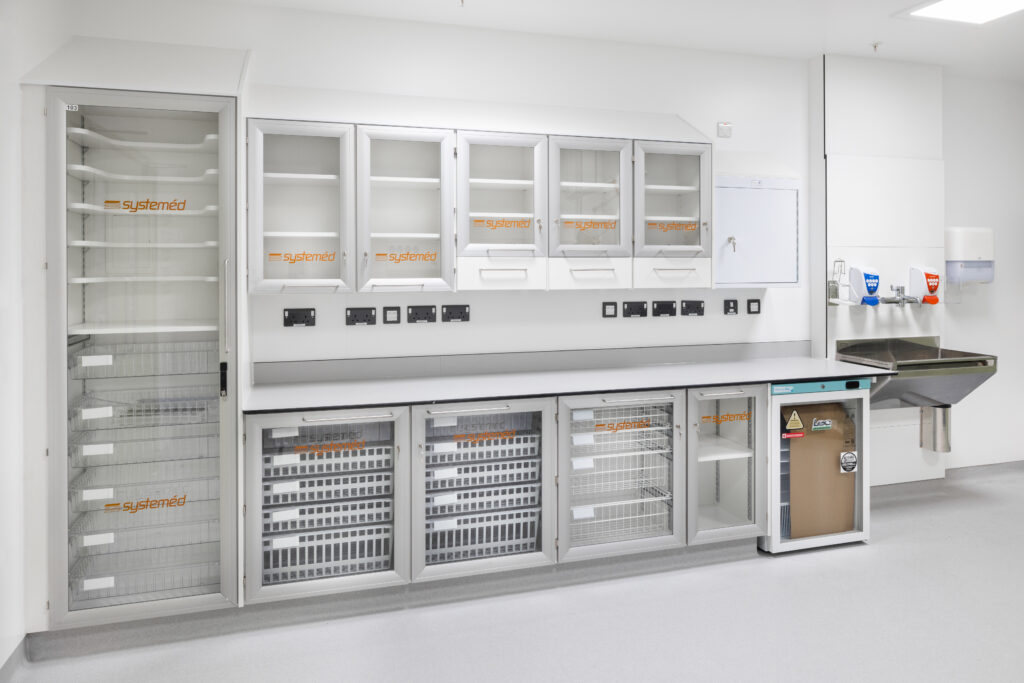
Areas to Avoid Cost Cutting
There’s always a balance between short-term price advantages and longer-term whole project cost savings. In almost every market there are choices and options for products that appear to be functionally the same.
Sometimes the smallest detail has extra functionality built-in that is crucial for clinical compliance and space utilisation.
Here are a few examples of why it pays to choose quality with a specialist clinical modular system, such as Systeméd fitted furniture:
Plinths and Plinth Corners
In busy, high activity areas, plinth can take a lot of knocking, particularly on the corners and need to be durable and robust. Cheaper alternatives often chip or dent easily or will swell and distort when exposed to floor mopping, making units look tired and increasing infection control risks by providing areas for bacteria to grow.
The Systeméd plinths are constructed from HP Laminate on a WBP Ply core which slots neatly into a rounded powder-coated aluminium plinth corner. The corners don’t just look professional, they’re strong, durable, and quick to fit, reducing installation time. They protect external corners from knocks and damage, keeping your installation smart and resilient and saving on repair costs and protecting your investment.
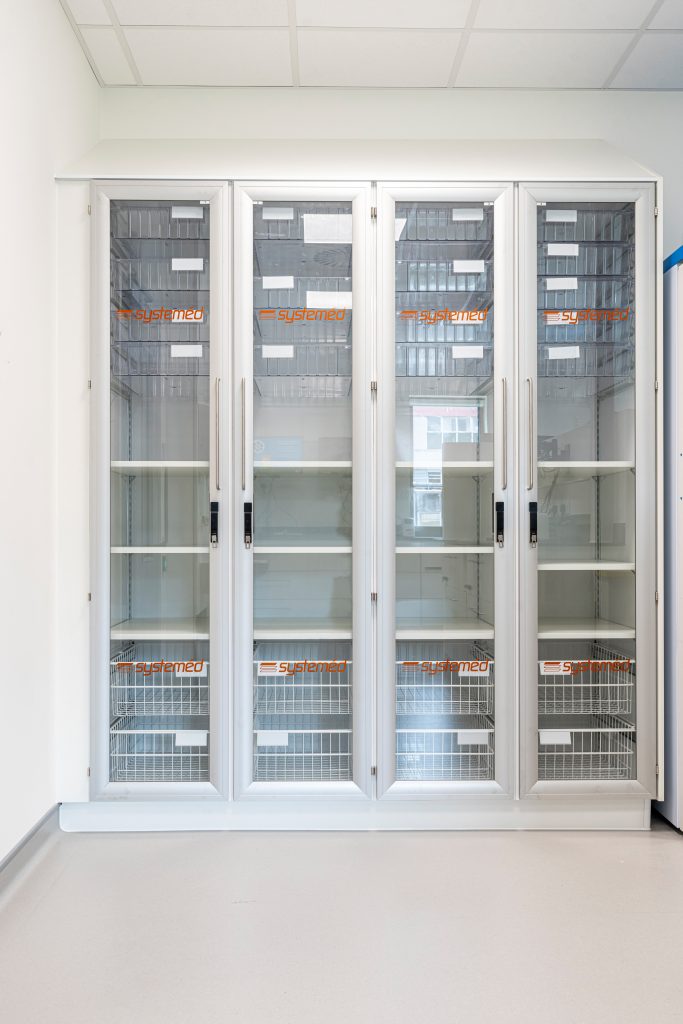

Exposed Knuckle Hinges
Cheap hinges don’t last under heavy use – they strain, sag, and eventually break. Investing in robust, tested hinges means fewer failures, less downtime, and no hidden repair costs.
Unlike standard hinges, the Systemed exposed knuckle hinges open a full 270° in line with HTM71 specification, meaning doors fold neatly back against themselves without creating any strain on the hinge fixings. They’re easier to clean, provide more internal space for accessories, and include a self-closing mechanism. Independently tested by FIRA, they meet BS2222-2 2009 2017 Test Level H for heavy-duty use — the only hinge of its kind to do so.
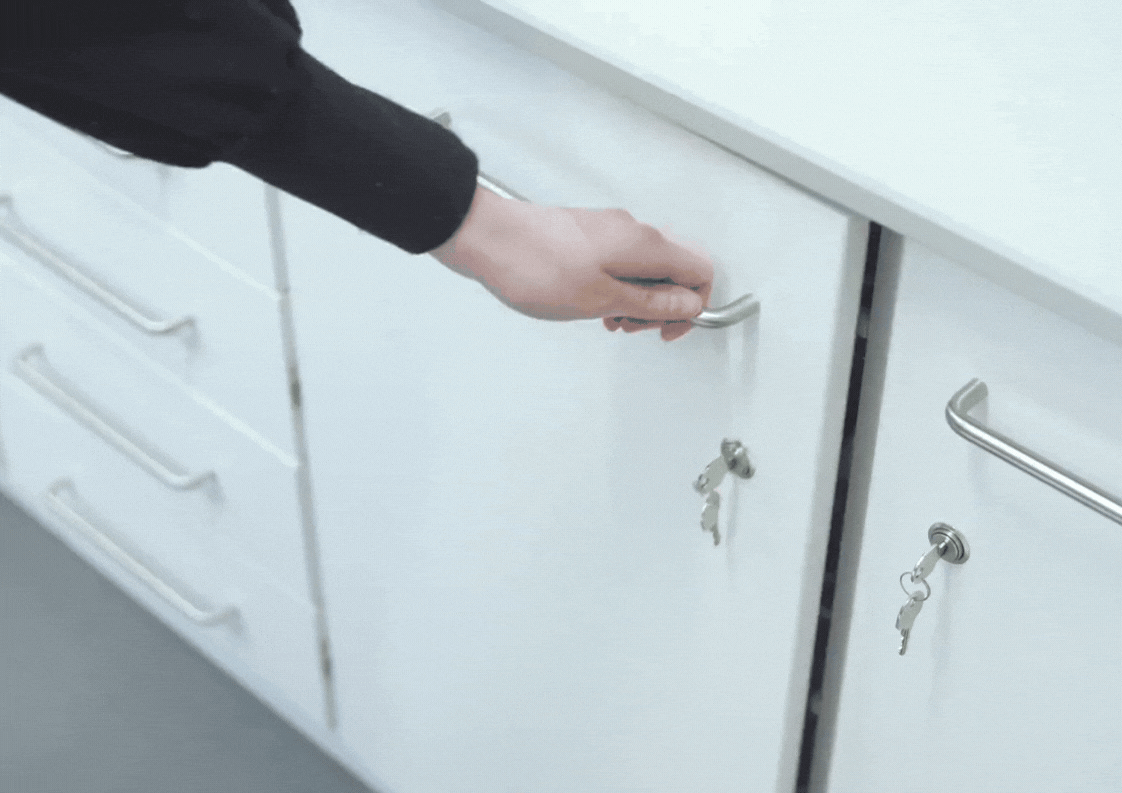
In addition, the Systeméd base cupboard doors have three hinges as standard as this is often the weakest part of a door and the additional hinge helps ensure that the doors will function for at least a minimum of ten years without failing in normal use Most other cabinet manufacturers only use two hinges.
Sloping Tops & End Panels
Cabinets with sloping tops and full-height clad end panels are far easier to clean and help eliminate dirt traps. This supports infection prevention — a critical factor in clinical spaces. Flat tops and open ends trap dust and contaminants, leading to higher cleaning costs, increased infection risks, and even regulatory non-compliance. Fitted properly, sloping tops reduce cleaning time, protect against infection-related risks, and extend the life of your installation.
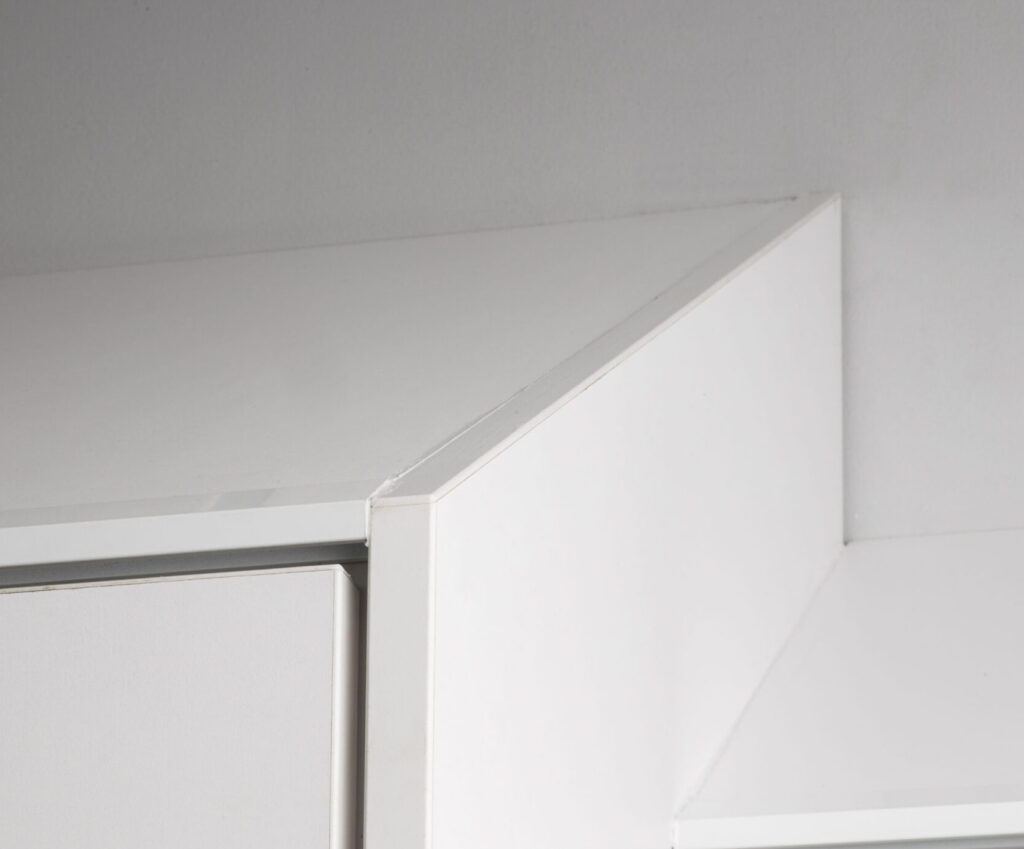
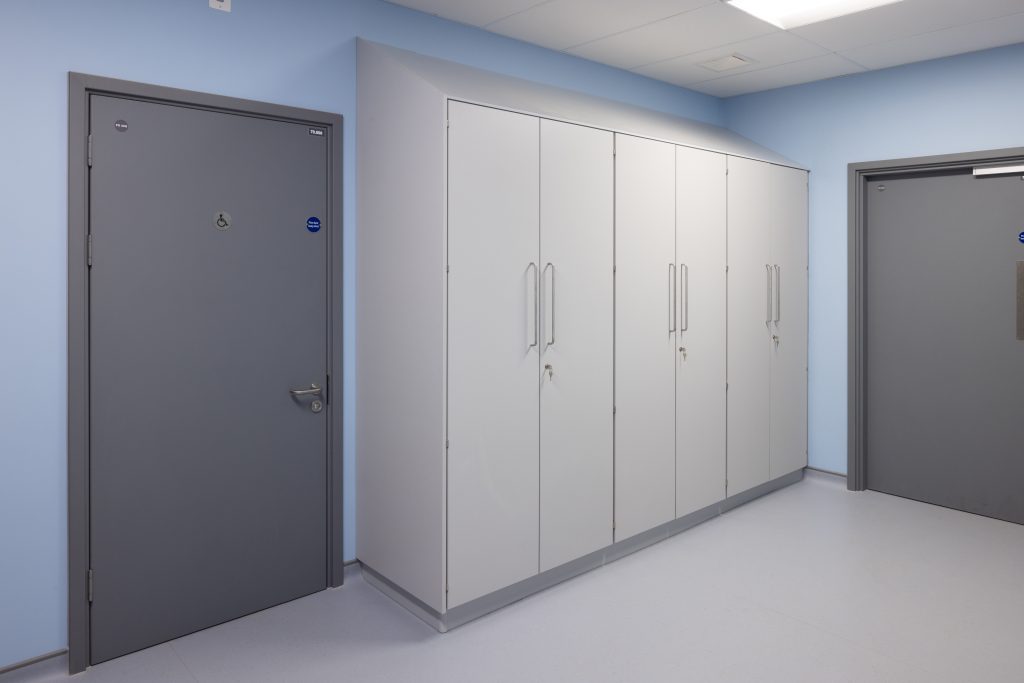
Handles
The Systeméd D handles are made of stainless steel, available in three sizes, and are designed for safety and practicality. Their smooth rounded profile avoids sharp edges that could scratch skin or snag uniforms, while also being easy to clean. They are durable, ergonomic, and built to last, saving money over time. Cheaper handle options are often too small and harder to grip (especially with gloves) have ends that can catch on staff uniforms and are more difficult to clean — creating hygiene risks, uniform damage and frequent replacements.
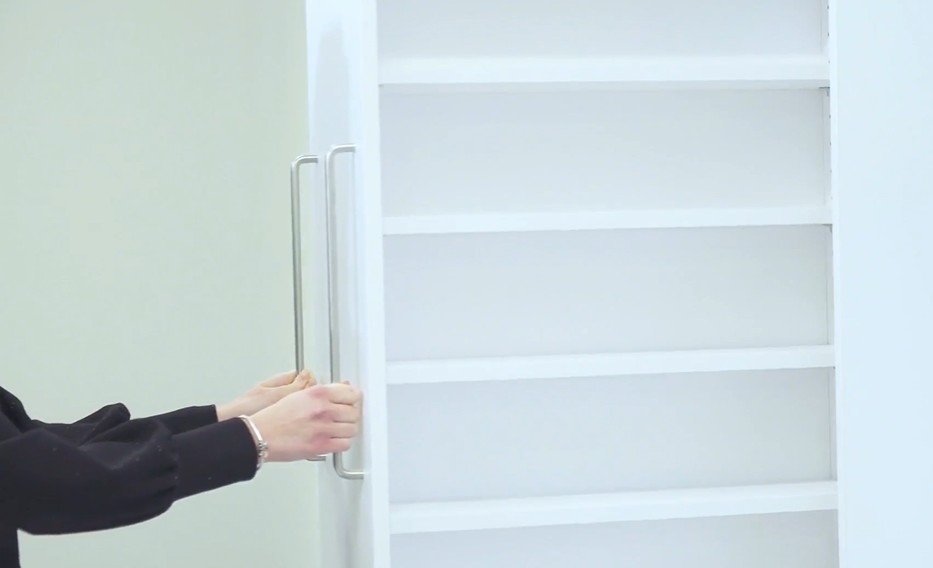
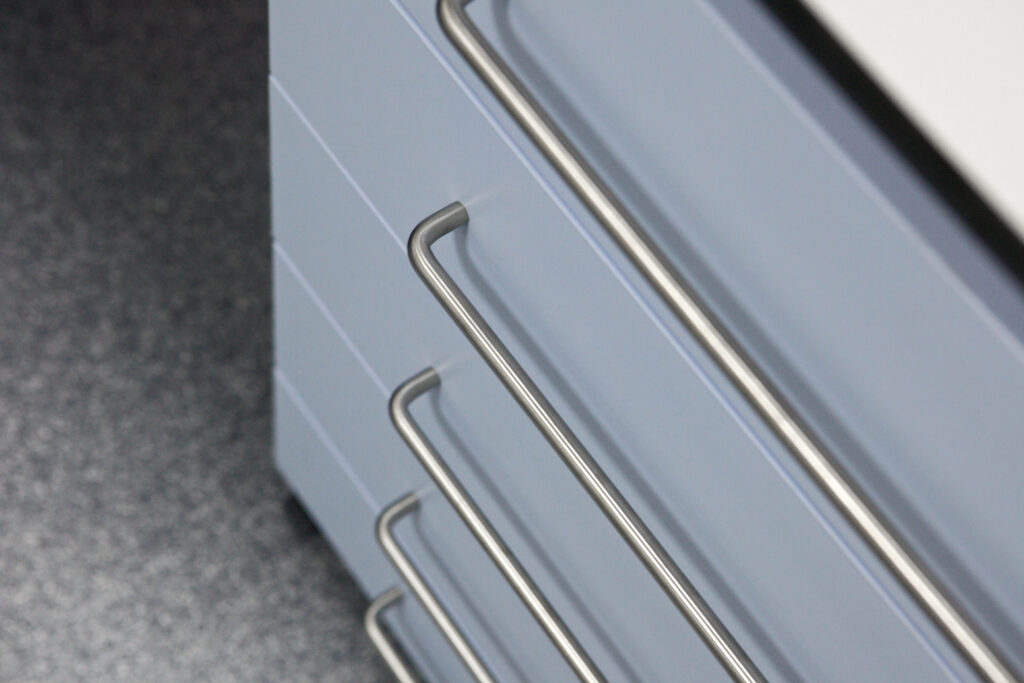
Products expertly designed for use in specific situations need to be made to a higher quality and standards than cheaper, mass-use equivalents. The initial cost may be higher but the lifetime costs will always result in better value.